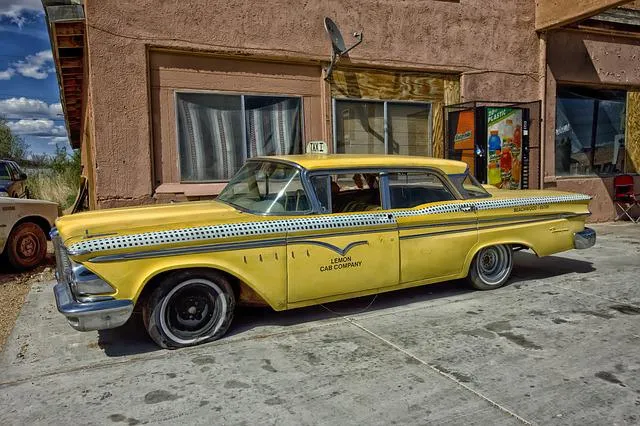For boxing fans, few events have made history like that The Rumble in the Jungle. It could not be otherwise, if we think that at the center of this legendary boxing match were two intense lives, such as that of Muhammad Ali and of George Foreman, two icons of boxing of the period. But in the sultry night of Kinshasa in which these two titans clashed there was much more, there were the eyes of the world who saw in this meeting not a simple fight between two men, but a clash of ideals, pure passions. . A wealth of suggestions that fully emerge in Muhammad Ali: Kinshasa 1974graphic novel published by Panini Comics that offers a more articulated vision of this unforgettable event.
The Rumble in the Jungle has been told in a thousand ways, from books to biopics like Ali with Will Smith, but each of these reinterpretations always had as focus the myth of Muhammad Ali, the boxer who had dared to challenge the American government on military engagement in Vietnam, losing his title and his license as a boxer, ready to return to the ring at the end of the forced removal from boxing. A story that alone deserves its place in the Olympus of sport, but to make this story even more epic is the path that made this event possible. It was therefore necessary to find an ideal starting point from which to build a compelling narrative, which knew how to go beyond what has already been told several times, arousing the reader’s curiosity by approaching him from a different perspective.
Muhammad Ali: Kinshasa 1974The Rumble in the Jungle becomes a comic
And there could be nothing better than a photograph, or rather, of an entire photographic reportage that tells not only the fight in the ring, but also the preparation for this epochal moment. There is no shortage of photos of The Rumble in the Jungle, but Muhammad Ali: Kinshasa 1974 arises from the sensitivity of the photojournalist’s eye Abbas, which becomes our point of view on this story. Not only to understand the incredible vitality of this fight, of this challenge between two different concepts of boxing, but to go beyond the sweat and blood spilled in the ring, helping us to understand what the world was like then and how much the presence of the two American boxers was the embodiment of a struggle of ideals on that night of October 30, 1974.
In Muhammad Ali: Kinshasa 1974 the tables dedicated to the meeting are central, but at the same time they are the culmination of a more articulated story. Taking advantage of the narrative ploy of the dialogue between Abbas and the reader, Jean-David Morvan it bases a complex and fascinating social portrait, not limiting itself only to defining the figures of Muhamad Ali And George Foreman, but highlighting other essential elements of this event. From the Machiavellian figure of Donald ‘Don’ Kingthe notorious match organizer who has also given prominence to subsequent generations of boxers, to the figure of Angelo, the confidant trainer Ali, Morvan broadens the reader’s vision by allowing him to understand on an emotional levelalmost epidermal, what were the emotions of the moment, not only of the two boxers, but of all those who looked at that ring as the stage of a social fight.

In addition to muscles and uppercuts, in the ring of The Rumbel in the Jungle two different worldviews were confronted. If Ali had given up his name of Cassius Clay to defend his principles, even going so far as to take sides against the directives of his own government, Foreman was instead a champion more welcome to the American establishment, willing to indulge in comments that supported a patriotic respect. of the voice of Washington. Two different faces of the American way that collided in Kinshasa, in Zaire, an African nation that in 1974 was one of the pearls of Africa, free from the previous colonial domination and ready to prove itself as a modern nation. And in such a social turmoil, Muhammad Ali’s voice was the drum that rang in the hearts of the localswho did not tolerate Foreman’s rich American attitudes.
A wonderful synthesis between drawing and photography
With intelligence, Morvan develops the first part of Muhammad Ali: Kinshasa 1974 making these differences emerge immediately, letting Abbas’ voice tell us this often overlooked background. But speaking of a photojournalist, in addition to his voice, Morvan let his shots also convey the power of those moments, creating an evocative work of hybridization between drawing original Abbas photographs, made available by the Abbas Photos Association. Abbas’s shots become an integral part of Morvan’s narrative fabric, in a wonderful alternation with the drawings of the South American artist Rafael Ortiz, who manages to capture the humoral essence of these epic figures, whether it is to show the power of their fists or the fragile emotionality of the men behind the high-sounding names of these athletes who made history.

Panini Comcis publishes Muhammad Ali: Kinshasa 1974 in a generously sized volume that pays homage to the wonderful work of Morvan and Ortiz, managing to give the right emphasis to Abbas’s rich photographic production. To give further charm to this graphic novel is the rich extras sector, which tells the genesis of this fascinating experiment, accompanied by a short chronology of the existence of Muhammad Ali. Reading Muhammad Ali: Kinshasa 1974 it is not reserved only for boxing fans, but represents a comic work of admirable workmanship.


